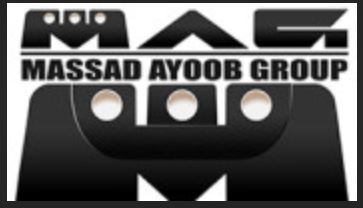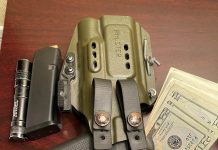
I’ll start off with some basic “dos and don’ts” to set the expectations of the course:
DO:
- Treat this like a college/continuing education course, not like you’re regular weekend of burning through ammo
- Bring a laptop. There’s so much material covered that I would have never been able to keep up with it trying to take notes by hand. Hell there were a few times where I got bogged down even whilst typing.
- Have some prior training/experience. This is not an introductory course. This is not a course to teach you what gun to buy or what holster to carry.
- Be proficient in basic gun handling/marksmanship.
- Bring gear as close to your daily carry as possible. Not a requirement, just a good idea.
DON’T:
- Be “that guy”. This is generally the first rule of any class. Don’t think you know everything, don’t be the one that says “but I do it this way”.
- Get bogged down in gear selection. There was a bunch of time that got tied up (unnecessarily in my opinion) with “what pistol do you carry?”, “what holster do you use?” from novice attendees. Don’t think that gear is going to make you a better shooter.
- Expect a shooting course. The ballistic portion of this class pretty much serves the same purpose as the shooting portion of your Concealed Carry qual: to show you’re responsible/effective/competent with a handgun. You’re not going to learn some new high-speed reloading technique, you’re not going to learn “transitional, dynamic multiple threat engagement” (That’s trademarked, by the way. You can’t just use that)
- Make this your first shooting course. There is a lot of very intense material covered here, so generally it’s better if you’ve already got some time studying/thinking about mindset/negative outcomes/ etc.
OK, now to the review:
*DISCLAIMER*With my version of the course, the shooting portion was taught by a local instructor, certified by Mas, and then he taught the classroom portion. So, for me, the first 2 days were the range-portion, and days 3-4 were the classroom. When Mas teaches the whole thing, they tend to spread out the shooting and classroom both over all 4 days. You can tell which one you’re signing up for based on if your class specifies “MAG 40” vs. “MAG 20 Range” and MAG 20 Classroom”. Mas arrived around this time, and at that point the instructors shot the qualification to show us what it looked like, provide some context as to the time frame, etc. At that point, everyone shot the qualifier and was graded. If I remember, a passing score was 240 or better out of 300 (80%)
RANGE:
Day 1: Showed up to the range, signed your life away with the requisite paper work (waivers and the like), reviewed the basic firearm safety rules, and then we hit the firing line. They started with the basics first: grip, stance, trigger press, etc. Then they moved on to reloads. They didn’t really teach a specific technique, the understanding being that students already had basic gun handling down. From there they went into the different stances (Isosceles, Weaver, Chapman). You got some exposure to the different distances and times that you’d be shooting at.
Day 2: We continued over what was covered on Day 1. We then started working from the holster, and then went through the specific stages of the qualification, which entails:4 yards: 6 rounds off hand – reload – 6 rounds strong hand. 8 seconds. 7 yards: 6 rounds – reload – 6 rounds. Stance of your choice. 25 seconds. 10 yards: 6 rounds “Cover Crouch” – reload – 6 rounds High Kneeling – reload – 6 rounds Low Kneeling. 75 seconds. 15 yards: 6 rounds Weaver – reload – 6 rounds Chapman – reload – 6 rounds Isosceles. We shot each section 3 times. Once under no time constraint, once under the time limit for each stage, and once “as fast as you can” (while still keeping them in the A-zone).
The purpose of the range work is to create a discoverable reference to your shooting competency. While there is some value as to the history and evolution of pistolcraft, with the proliferation of smartphones and YouTube, it’s easier now to create your own records of your shooting ability. I would be hard pressed to say that the full 40 hour course is as essential as just the 20 hour classroom portion that I’ll discuss in the next article.



